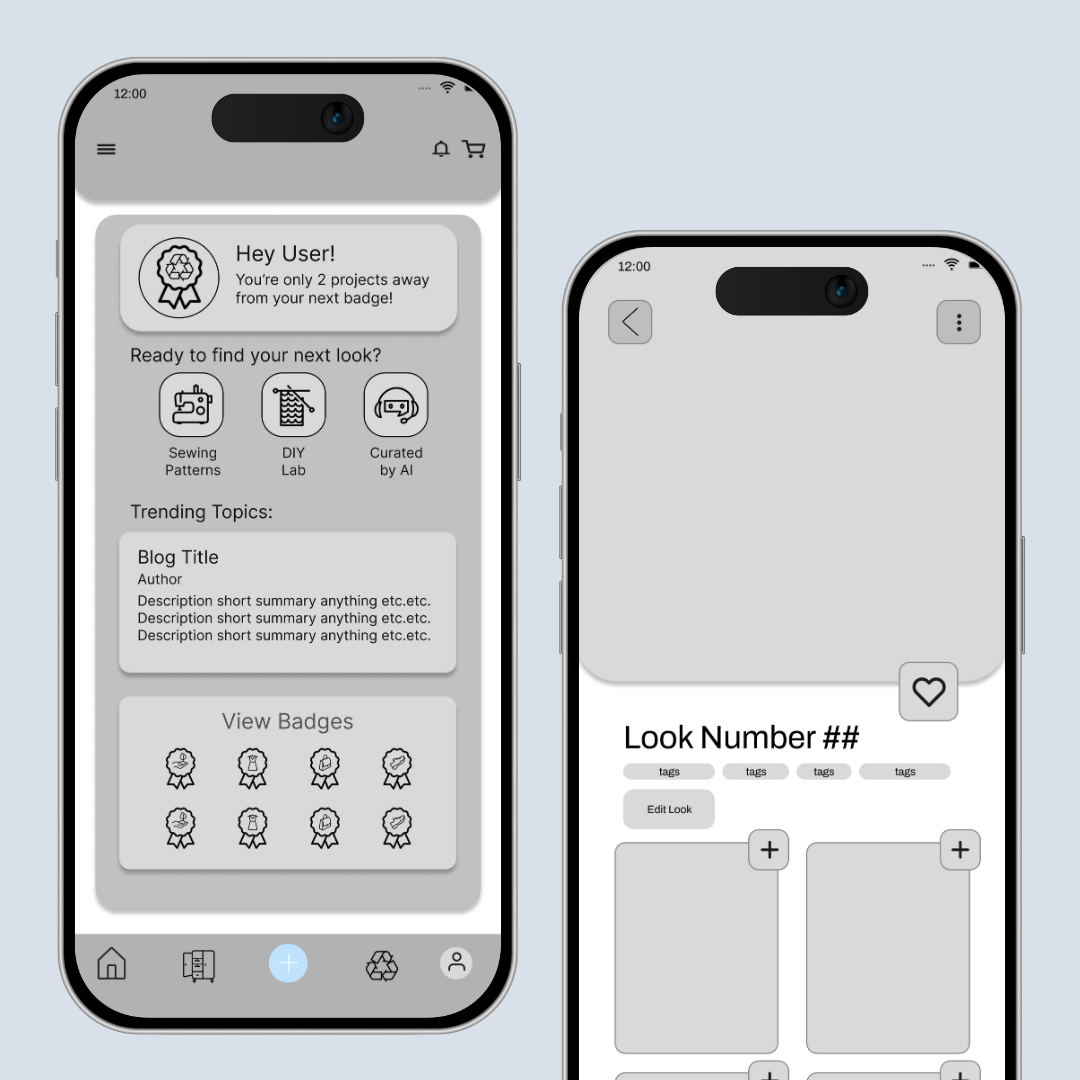LookBook began as an idea inspired by my brother's challenges with organizing his wardrobe and finding stylish outfit combinations. Witnessing his frustration with daily decisions about what to wear motivated me to create a tool that could simplify the process and bring joy to an everyday task. I wanted to make a tool that helped others and brought joy and simplicity to a task many find tedious—deciding what to wear.
As part of the Rutgers MBS program's Introduction to Product Design and Development course, I led the conceptual design and development of LookBook, a proposed AI-powered mobile application to revolutionize wardrobe management for fashion-conscious individuals ages 20–40. The app simplifies wardrobe organization, offers personalized outfit recommendations, and promotes sustainability, addressing user and business needs.



Fashion retailers and wardrobe management tools often overlook decision fatigue and sustainability, missing an opportunity to connect with users seeking functionality and eco-conscious solutions. This gap represents a pain point for users and a missed opportunity for businesses to build deeper connections with their audience. With the growing demand for solutions that simplify daily routines and encourage sustainability, the need for a thoughtful and innovative product like LookBook was clear.
User Challenges:
-2.png)


Approach:
Findings:



Key Features:
Unique Contributions: I led brainstorming sessions to refine these features, ensuring feasibility and alignment with user needs. My teammates provided invaluable insights, especially in shaping the sustainability dashboard. Their research into eco-friendly practices and actionable suggestions added depth and usability to this feature, making it a standout aspect of LookBook.



Prototyping: Creating an intuitive and delightful user experience was a central focus of our conceptual and design work. I designed the core interfaces of the app with simplicity and functionality in mind:
Visual Design: Clean, modern aesthetics were key to appealing to our demographic. I worked with my teammates to balance sleek visuals with usability, ensuring the app felt professional yet approachable.
User Testing: User feedback was the backbone of our design iterations and conceptual refinements:



The final concept for LookBook integrated all key features into a cohesive solution that addressed both user needs and business objectives:
Additionally, we developed a Technology Roadmap and Financial Model to outline potential implementation strategies and evaluate LookBook's economic feasibility. These ensured alignment with long-term business goals and market potential. While this project was focused on design and concept development, the resulting prototype showcased a thoughtful and user-centered approach to solving wardrobe management challenges. This design is well-positioned for future development into a fully functional application.










The success of LookBook wouldn't have been possible without the incredible teamwork of my peers. Each member brought unique perspectives and skills that enriched the project. From creating our company, Ease AI, to conducting research and refining design features, everyone played a pivotal role in shaping LookBook's vision and execution. I am deeply grateful for their contributions and collaboration throughout this journey.
.png)

%202.png)
Vision & Strategy: I'm someone who thrives on turning ideas into tangible outcomes. For LookBook, this began with identifying and articulating the key user pain points through extensive research. I crafted a clear and compelling vision for the app by deeply understanding challenges like decision fatigue and underutilized wardrobes. This vision blended personalization, task automation, and sustainability—elements designed to resonate with our users and deliver measurable value.
User Research: Research is where innovation meets reality. While this was a team effort, I conducted two in-depth user interviews to uncover frustrations such as decision fatigue and underutilized clothing. My team members complemented this by leading additional interviews and synthesizing survey insights. Together, we created a well-rounded understanding of our users' needs. I also collaborated with them to refine our testing questions and align on the analysis process.
Wireframing & Prototyping: I led the development of the UI/UX and user journey for the digital wardrobe and AI-powered recommendation interfaces. While I was less involved in creating the interactive prototypes, I worked closely with my teammates who developed them in Figma. I focused on ensuring seamless navigation, logical workflows, and a visually cohesive user experience. My teammates provided valuable input during critiques, helping refine the designs to ensure they were user-centric and effective.
Collaboration: Teamwork is where the magic happens. By facilitating weekly brainstorming sessions, I helped surface diverse ideas and foster an open environment for critique. My peers brought innovative perspectives, significantly enriching our solutions, such as refining the sustainability dashboard.
Reflection & Retrospective: This project was a mosaic of learning moments. Early on, I steered our team toward focusing on the most impactful features, using recurring pain points from our research as a guide. One of the most humbling lessons came during user testing. We assumed users would manually upload and categorize their wardrobe items, but the process proved too cumbersome. My teammates and I brainstormed alternatives and collectively pivoted to implement AI-assisted categorization, significantly reducing user effort. Another major milestone was redesigning the navigation structure after initial feedback revealed usability challenges. I collaborated with my team to streamline workflows and reimagine the menu layout, ensuring LookBook felt intuitive. This iterative journey deepened my appreciation for balancing idealism with practicality, a lesson I'll carry forward in every project.
Key Learnings:
Future Recommendations: